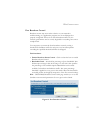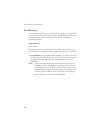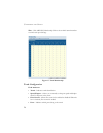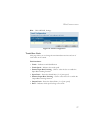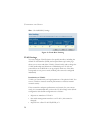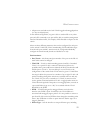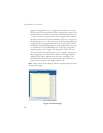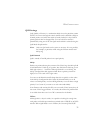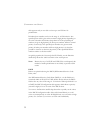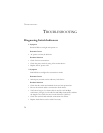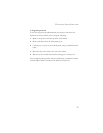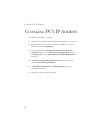
W
EB
C
ONFIGURATION
29
• All ports can send and receive both VLAN-tagged and untagged packets
(i.e. they are hybrid ports)
In the default configuration, any port is able to send traffic to any other
port and a PC connected to any port will be able ro reach the management
interface. Broadcast traffic, for example, will be flooded to all ports on the
switch.
There are three different parameters that can be configured for each port
on the switch; VLAN IDs (VLAN membership), PVID and Packet Type.
Note that the ports within a Trunk cannot be configured individually;
configure the Trunk instead (Trunks are labelled T1 to T8).
Field Attributes
• Port/Trunk – The front-panel port-number of the port or the ID of a
trunk. This cannot be changed.
• VLAN ID – VLAN to which matching protocol traffic is forwarded.
VLAN 1 is a special VLAN; it cannot be deleted and, if there is a
possibility that a port could become isolated, the Web USer-interface will
add the port to VLAN 1. You can add up to seven VLANs to the
configuration of the switch. Each VLAN must be given a VLAN ID in
the range 2-4094. One port can be a member of up to eight VLANs. All
packets travelling through the switch are associated with one and only
one VLAN. If a port is not a member of a VLAN, it cannot send or
receive packets associated with that VLAN. A tagged packet carries its
VLAN ID in the payload of the packet. An untagged packet, received on
a port with Packet Type set to “All,” is associated with the VLAN
identified by the PVID.
• PVID –
VLAN ID assigned to untagged frames received on the
interface. The PVID is (Port VLAN ID) is the VLAN ID that is
associated with untagged, ingress packets. It is not possible to remove a
port from VLAN 1 unless its PVID has been changed to something other
than 1. The PVID has no effect on ports that have Packet Type set to
Tagged. (Default: 1)
•Packet Type – Sets the interface to accept all frame types, including





